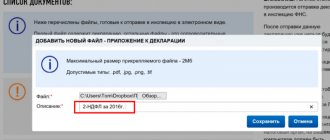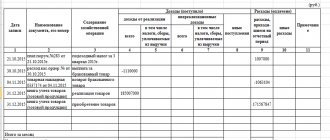A man comes to a store or travel agency. He gets a working vacuum cleaner or an exciting trip - and is happy. This is an ideal situation, but in reality expectations are violated.
The buyer returns a defective vacuum cleaner, but the administrator does not accept it. He was poisoned by expired yogurt and writes to Rospotrebnadzor - but does not know the name of the company. The pharmacy looks dubious - and he can't check the license. To protect consumer rights and help resolve disputes, the state obliges entrepreneurs.
Submit reports in 3 clicks
Elba will help you work without an accountant. She will prepare reports, calculate taxes and will not require any special knowledge from you.
Try 30 days free Gift for new entrepreneurs A year on “Premium” for individual entrepreneurs under 3 months
What should be in the consumer's corner
Entrepreneurs place four types of documents in the consumer corner.
1. Information about the seller or performer:
- A copy of the document on state registration of individual entrepreneur or LLC. Name of the body that registered it.
- Documents that allow an enterprise to conduct certain activities: licenses or certificates of state accreditation. For example, for a store - a license to sell alcohol and tobacco products.
- Opening hours and address.
2. Regulatory acts of the Russian Federation:
- Law on Consumer Protection".
- Code of the Russian Federation “On Administrative Offences”.
- Decree of the Government of the Russian Federation “Rules for the sale of certain types of goods” or “Rules for the provision of catering services”.
3. Documents that depend on the type of business. For example:
- Conditions for the sale of certain groups of goods, For example, restrictions on the sale of tobacco products and alcohol to minors.
- Journal of trading activity checks - for trading.
- Sanitary and epidemiological rules - for trade and catering.
- Rules for the provision of services and price list - for those who provide services.
4. Other documents:
- Book of complaints and suggestions.
- List of regulatory and supervisory authorities with addresses and telephone numbers.
- The procedure for servicing preferential categories of citizens.
- Evacuation plan and fire safety rules.
Books with legal acts are sold in Rospechat and bookstores. Sometimes entrepreneurs print texts on a printer to save money. The regulatory authorities are against it: you never know what you changed in the content. Buy official publications so as not to take risks.
All texts in the consumer corner must be in Russian. If your region additionally has a national language, you can duplicate the information in it, but this is not necessary.
Responsibility
If there is no place where the client could familiarize himself with the company’s papers, the manager and the legal entity or individual entrepreneur itself will face a warning or a fine. In case of the first and minor violation, for example, the absence of any information on the stand, the organization will get off with a warning and will eliminate all shortcomings within the proposed period.
An organization or individual entrepreneur may be fined for not having a consumer corner. Citizens, including individual entrepreneurs, will pay from 1.5 to 2 thousand rubles, responsible persons from 3 to 4 thousand rubles, organizations from 30 to 40 thousand rubles.
Prosecution is within the competence of Rospotrebnadzor and its territorial divisions.
It’s easy to create a consumer corner – there are convenient stands on sale, both ready-made and made to individual sizes. The information posted there must be current and truthful. A consumer corner for an entrepreneur is set up according to a similar scheme. The main rule is compliance with legal requirements.
Conclusions:
- All companies that sell goods or provide services to the public design consumer corners. They help consumers exercise their rights.
- Consumer Corner - a set of documents about the company and regulations. Usually it is designed in the form of a stand. This is not necessary: folders or files in a visible place will do.
- The cost of decorating a consumer corner is from 300 rubles. Fines for individual entrepreneurs - from 1,500 to 2,000 rubles, for LLCs - from 30,000 to 40,000 rubles. Decide for yourself whether to take risks or not.
Principles for designing information stands
The stand itself is usually a flat frame structure with an information field (board), where the necessary documents are placed. They are placed on the stand in two ways:
- Insert into transparent plastic pockets 0.5-3 mm thick. Flat pockets are sufficient for one or two sheets, while voluminous pockets are needed for brochures and leaflets. The standard pocket size is A4, but pockets of other sizes are made to order.
- They are attached directly to the board itself using different types of fasteners, for example, buttons or double-sided tape.
The legislation does not provide requirements regarding how to design an information stand. The rules apply only to filling. You can choose the design yourself, adhering to the following principles:
- To attract attention. The design of the stand should have bright accents that would make a person come up and find out what is presented on it. This could be a bright element or background of the stand, an unusual presentation in the form of infographics or comics, etc.
- Prioritization. It is difficult for a person to pay equal attention to a large number of objects, especially if they are identical. It is necessary to determine the most important information that a person should see first, and the less valuable information that is of an auxiliary nature.
- Visibility. It is always easier for a person to perceive not text, but various graphic elements in the form of photos, images, graphs, illustrations. But there should not be many of them so that attention does not wander. It is worth diluting graphic materials with text ones.
- Constant updating of information. This is an important factor because the data must always be current and updated regularly.
Legislative regulation
The legislator regulates the rules and procedure for informing buyers using three main documents:
- Law of the Russian Federation No. 2300-1 of 02/07/1992 “On the protection of consumer rights” in the new edition of 2020.
- Decrees of the Government of the Russian Federation:
- dated January 19, 1998 No. 55 – in relation to trade;
- dated August 15, 1997 No. 1036 - in the field of catering.
Legal norms represent general, fundamental provisions obliging sellers and performers to disclose documented information to protect their interests, prescribed in Articles No. 8-10 of Federal Law No. 2300-1.
The rules approved by the Government of the Russian Federation clarify and list which legal norms and documents confirming the status of an individual entrepreneur are presented for public review. The legislator does not oblige enterprises to call information boards by any term.
Watch the video: “Lawyer’s advice on creating and designing a consumer corner.”
What it should look like: examples in the photo
The appearance of the stand for the buyer is not regulated by law, so all aspects of its design are advisory in nature. Although it was developed primarily in the interests of the consumer, it also has certain benefits for the entrepreneur:
- decorated in accordance with all the rules, the stand increases the trust and loyalty of the consumer, since all the information is clearly presented to him - from the name to all available licenses of the organization;
- the information stand plays the role of a means of feedback with the buyer, which serves as a tool for monitoring the quality of service;
- compliance with the requirements of regulatory legal acts will protect the entrepreneur from fines for violating consumer rights during inspections by regulatory authorities.
In most cases, the stand is a rectangular or square panel with transparent pockets in which the documents necessary for the client are placed. The size of the panel depends on whether the organization intends to limit itself to only mandatory documents or plans to place additional information in the corner.
The stand can also be stationary or mobile, with removable or permanent information. It can be in the form of a folder with rotating transparent pockets.
Due to the fact that the law does not oblige the production of a specific stand model, the organization retains the right to choose it to its taste. For example, you can order it in corporate colors with an individual design, or purchase a standard stand.
The name of the stand is not regulated by law, so any name can be used - buyer's corner, consumer's corner, information stand, etc. Also, the law does not oblige it to be placed in any specific place; the only requirement is that the stand must be located in an easily accessible place so that the consumer can find it on their own. The most important thing is to comply with the legal requirements for the content of the stand.
The photo shows a sample of what a buyer's board should look like.
Responsibility and penalties for absence
In accordance with the Code of the Russian Federation on Administrative Offenses, an entrepreneur or organization that does not place a stand with information for consumers in its retail premises may suffer the following penalties:
- Warning - such a measure can be applied if the corner exists, but is located in a place inconvenient for the consumer, and therefore there is no possibility of familiarizing with the information.
- Fine – if the comments specified in the order are not corrected within the specified time frame.
According to Article 14.8 of the Code of Administrative Offenses of the Russian Federation, the absence of a consumer corner entails the imposition of an administrative fine in the amount of:
- For an official from 500 to 1000 rubles.
- For an individual entrepreneur from 1000 to 3000 rubles.
- For a legal entity from 5,000 to 10,000 rubles.
The reason for a fine will be the situation if all the necessary documents are filed in a folder and are not publicly available. It is acceptable to place information in a folder, but it must indicate that this is information for the consumer.
The regulatory authorities recommend that organizations and entrepreneurs promptly and in accordance with all the rules set up information stands for consumers, and do not forget to update the data posted on them in the future.
Who checks availability?
Employees can check the availability of documents prescribed by law in the consumer corner:
- Rospotrebnadzor.
- Sanitary inspection authorities.
- Fire authorities.
- Trade department of the district territorial administration.
- Prosecutor's office.
Scheduled inspections are carried out on the basis of consolidated annual plans formed by the Prosecutor General's Office of the Russian Federation.
Different subjects have their own frequency. If one of these regulatory organizations comes to the entrepreneur for a scheduled inspection or upon request, it has the right to check the information stand for the presence of mandatory documents.
What? Where? When?
Referring again to this legislative act, we list what exactly should be disclosed on information stands in your office:
- General information about your TOS. That is, this is the name of the organization, the full name of the head, and registration data with the Federal Tax Service, and addresses (de jure and de facto), and necessarily contact information (telephone, email, personal website address). Here you also need to add the operating hours of the management office, the working hours of the dispatch service and the schedule for receiving citizens. Here we also indicate the number of apartment buildings in management and list them.
- Information on the results of financial and economic activities, including the annual accounting report, data on income/expenses. (I don’t want to, but what can I do, I have to...)
- Data on completed and upcoming work on the maintenance and repair of the common property of the apartment building, as well as a list of provided utilities.
- Copies of agreements that were concluded on behalf of residents for the use of the common property of the apartment building. some advertising banners or other structures can be mounted and subsequently used on an apartment building
- Management agreement, plan for upcoming work with an estimate and scheme for the year ahead, data on cases of reduction of fees for poor-quality maintenance and repair of common property and utilities (for the year).
- Information about the cost of the services provided (for each separately), the frequency of their implementation, results and guarantee. This also includes information about the structure of the house, its wear and tear and the technical condition of the common property of the apartment building.
- Utility tariffs. It is necessary to indicate each separately, specifying the suppliers of these services, volumes and purchase prices. (It should be noted here that any changes in information that occur must be made to the stands within 10 working days from the date of their receipt).
Why does a management organization need a group on social networks?
90810









